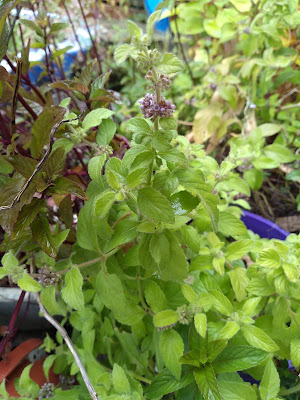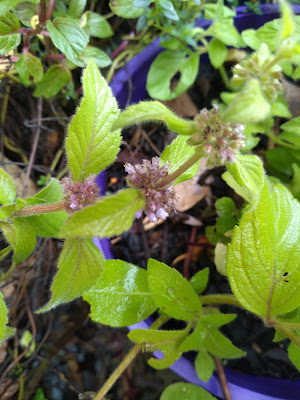I grow a lot of tomatoes each year, I really love tomato season. Some varieties are far better than others.
My kids help me grow the tomatoes, collect the fruit, eat some of the tomatoes, bag some flowers and save some seed for the future.
I don't have enough space/water/time to grow every tomato I have every year. I have two tomato varieties that I do grow every year because they taste incredible (Japanese Black Trifele, and Verde Claro), and the rest I grow on a rotation to refresh the seed every 3 years.
On second thoughts, I also grow micro tomatoes every year, but they are more for novelty and for breeding rather than for feeding my family, plus they take next to no space, so I don't tend to mention them.
 |
| Various tomatoes I grew |
Some of the tomatoes I grow are very old heirloom varieties, others are more modern, while others I am breeding myself. This year I grew 14 or 15 varieties of regular tomatoes (dwarf, or determinate, or indeterminate), and a small handful of micro dwarf varieties. The plants range from a few cm tall to about 2 metres tall depending on the variety.
I also grew some wild relatives of tomatoes and some wild x domestic cross tomatoes. I really need to take some photos of them and save some seed before winter comes.
I thought I would show off some of my tomatoes below.
 |
| Tomatoes: Tommy Toe, Unnamed, Reisetomate, Igloo, Japanese Black Trifele, Verde Claro, Snow White, and Black cherry |
My absolute favourite tasting tomato is called 'Verde Claro'. It is a green when ripe cherry tomato that tastes incredible. They look similar in size/shape to a grape. Whenever people try these they love them.
Every time I let people try these along with any other variety they always say that verde claro is the best tomato they have ever eaten. They aren't the perfect tomato, but their taste is absolutely divine. There is good reason I grow them every year!
 |
| Verde Claro and a bunch of grapes |
I love the red tomato called reisetomate. The flowers and fruits are fasciated, the fruits are red and lobed and can be pulled apart into segments.
Reisetomate tomatoes are very sour, a little salt brings a true depth of flavour that I really enjoy. Each and every tomato has a unique shape.
 |
| Reisetomate tomatoes |
I have been working on developing an improved black tomato for a while now. The unripe fruit is purple and beautiful, it almost looks like an egg plant. The ripe tomatoes have greenish yellow under the black, and the flesh colour is green.
The black comes from high levels of antioxidants, and only appears where the sun hits the fruit. They are roughly ping pong ball sized fruits and possibly my second favourite in taste after verde claro. The fruit are a bit too small, but still large enough to slice for sandwiches.
I need to name these and start distributing the seeds as they are an incredible tomato variety. I would hate to lose them if anything were to happen to my stock.
 |
| One of the varieties that I am breeding |
 |
| This colour in tomatoes was unimaginable a few years ago |
Another I grew this year was a variegated tomato. I grew them to do some breeding and a few other genetics experiments, but after talking to some other growers I don't think anyone else in the country has variegated tomatoes so I should probably try to distribute the seeds so this allele is not lost. Like many variegated plants, these aren't quite as vigorous as all green plants.
These are truly beautiful variegated tomato plants. The leaves and stems get variegation of green, yellow, white, and pink. The fruit is mostly red and round (although some fruits are slightly variegated) and tastes nice and surprisingly sweet.
They could happily live in a flower garden and are a stunning showpiece of a plant.
 |
| Variegated tomato foliage |
Micro dwarf tomatoes are heaps of fun. These Micro Tom plants are thriving yet not reaching 5cm tall! I am doing some breeding with them and hope to have something incredible to show for my efforts next year or the year after.
You won't feed your family with micro tomatoes, but they can grow in a cup of soil on a window sill. Traditionally they can taste a little insipid so they need some work in improving their taste, which is why I am breeding new micro tomatoes. Some of my newer lines taste better than others.
I grow everything organically and sometimes sell some tomato seeds through my for sale page. If you see something you love and I don't sell them let me know because I may be able to get you in touch with someone who does.
















































